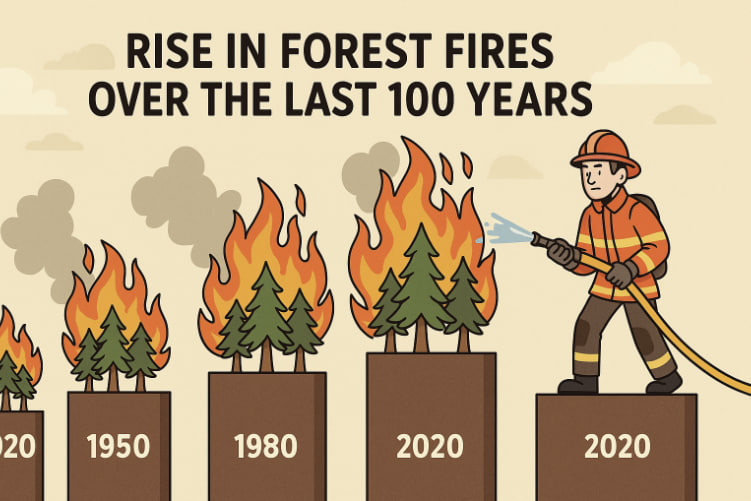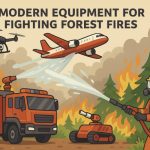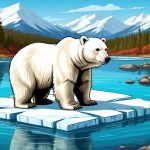Over the past century, forest fires — also known as wildfires — have become larger, more frequent, and more destructive. Once seasonal and geographically limited, wildfires now pose a global threat to ecosystems, human health, and climate stability. This article explores how wildfire patterns have evolved over the last 100 years, what’s driving the rise, and what it means for the future.
Historical Perspective: How Forest Fires Have Changed
In the early 20th century, forest fires were mostly seen as natural disturbances or accidents. Many occurred in remote areas and were often left to burn. But over the decades, several shifts have been observed:
1920s–1950s
- Wildfires were primarily caused by lightning strikes, logging operations, or human carelessness.
- Fire suppression policies, especially in the United States, aimed to extinguish all wildfires — an approach that led to unnatural fuel buildup in forests.
1960s–1980s
- Industrial growth and road expansion increased human presence in fire-prone areas.
- Satellite monitoring began providing early data on global fire patterns.
1990s–Today
- Fire seasons have become longer, with more area burned each year.
- Fires are spreading in new regions — including the Arctic and previously fire-resistant rainforests.
- Mega-fires (larger than 100,000 acres or ~40,000 hectares) have become more common.
Global Trends: What the Data Shows
- According to the World Meteorological Organization (WMO), the number of extreme wildfire events has increased significantly since the 1970s.
- California, Australia, Russia, Canada, and the Amazon Basin have experienced their worst fires on record in just the past two decades.
- A 2022 UN report warned that wildfires are projected to become 30% more intense by 2050, even with current climate pledges in place.
Key Drivers Behind the Increase
1. Climate Change
- Rising global temperatures dry out vegetation, making it highly flammable.
- Longer droughts and heatwaves create ideal wildfire conditions.
- Warmer winters reduce snowpack, drying forests earlier in the year.
2. Land Use Changes
- Logging, mining, and agriculture disturb natural landscapes and increase ignition risks.
- Expanding towns and infrastructure in wildland-urban interfaces expose more people to fire threats.
3. Suppression Policies
- Decades of putting out all fires have led to excess dry vegetation, creating the perfect fuel for catastrophic fires.
4. Human Activity
- Over 85% of wildfires in North America are started by people — through campfires, power lines, discarded cigarettes, or arson.
Consequences of Growing Wildfires
- Carbon emissions: Wildfires now release billions of tons of CO₂ annually, accelerating climate change.
- Biodiversity loss: Entire ecosystems and endangered species are destroyed or permanently displaced.
- Health impacts: Smoke contributes to respiratory disease, cardiovascular problems, and premature death.
- Economic costs: Fire damage, evacuations, and rebuilding cost billions of dollars each year.
Can This Trend Be Reversed?
Solutions exist — but they require bold action:
- Reintroducing controlled burns to reduce excess fuel safely
- Strengthening early warning systems using AI and satellite data
- Investing in fire-resilient infrastructure and forest restoration
- Reducing greenhouse gas emissions to slow global warming
- Educating communities on fire safety and risk awareness
Conclusion
The past 100 years have seen a dramatic escalation in the scale, frequency, and danger of forest fires. While fire is a natural part of many ecosystems, today’s wildfires are often fueled by human-driven change. Understanding the historical trends and underlying causes is the first step in developing smart, science-based responses to protect forests, lives, and the climate.
Glossary
- Wildfire – an uncontrolled fire in a forest, grassland, or other natural area.
- Fuel buildup – the accumulation of dry vegetation that increases fire risk.
- Climate change – long-term shifts in temperature and weather patterns, often caused by human activity.
- Wildland-urban interface – areas where human structures meet undeveloped wildland.
- Controlled burn – a planned fire used to reduce excess vegetation and prevent larger wildfires.



You have noted very interesting points! ps nice site.